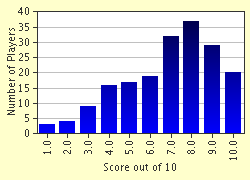Quiz Answer Key and Fun Facts
1. The revoking of this doctrine by Soviet leader Mikhail Gorbachev in 1989 led to the Autumn of Nations in Eastern Europe.
2. Which country's communist government was the first to be swept away?
3. What was the name of the trade union which led the opposition in Poland?
4. Which Eastern Bloc country experienced the 'Velvet Revolution' in 1989?
5. In October of 1989 this country's communist party underwent a name change as it renounced its monopoly on power. At the same time it changed the country's official title too, dropping the "People's Republic" to become a plain "republic".
6. The flight of over 30,000 of its citizens to its neighbour was a major factor in the fall of which country's Communist regime?
7. Unlike in the rest of the Eastern Bloc, events in this country in 1989 took a more violent turn.
8. East Germany went through a number of leadership changes in the period 1989-90. However, who was the first leader to go, ostensibly due to ill health?
9. Which Communist leader was executed with his wife on Christmas Day 1989?
10. In the summer of 1989, before any of the Communist governments of Europe had fallen, a human chain was formed through three republics of the Soviet Union, symbolising their dissatisfaction with rule from Moscow. Which of these Soviet Republics did the chain NOT pass through?
Source: Author
alan03
This quiz was reviewed by FunTrivia editor
bloomsby before going online.
Any errors found in FunTrivia content are routinely corrected through our feedback system.

